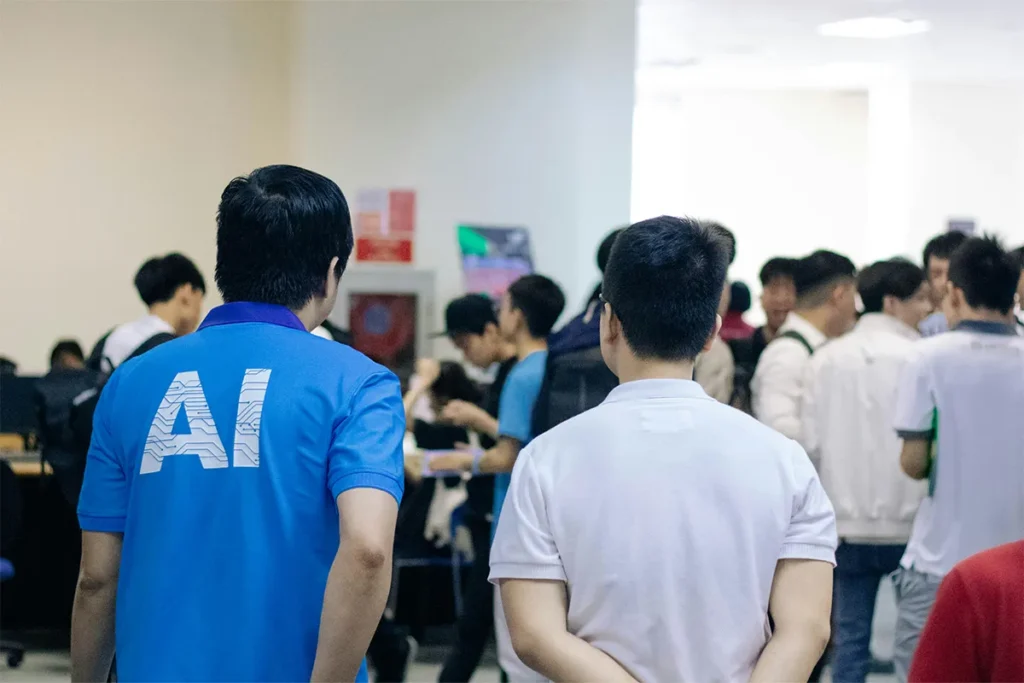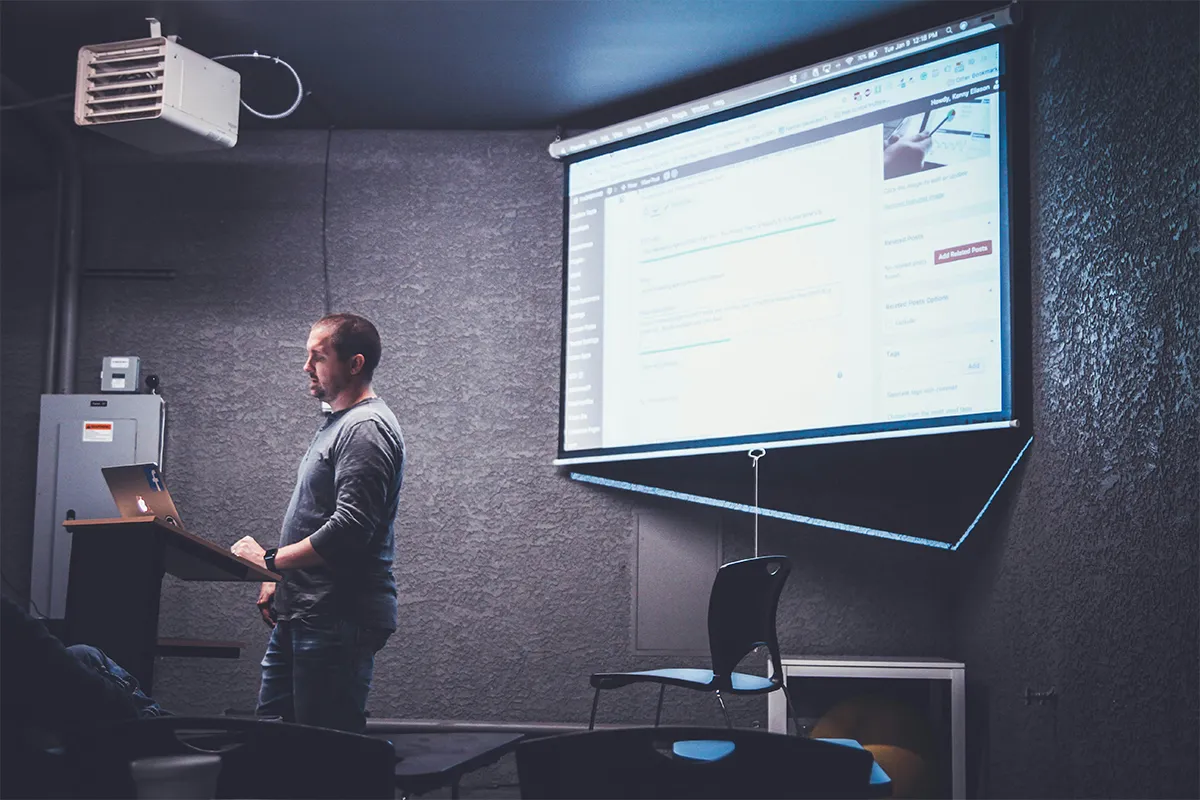AI has revolutionized our ways of working. It has provided a new sense and introduced the human to next level of convenience. The fear that AI is eating jobs is baseless. This fears is the basis of creating more and more jobs ahead. There are a number of sectors where AI is playing a crucial role in helping humans.
Similarly, the education sector could be number one on the list where AI can contribute significantly. It can improve education by leaps and bounds. Teachers must adapt to new technological trends to make improvements in the educational sector.
These top 8 tips and tricks on how teachers can use AI in the classroom are based on well-researched methods.
AI in Classroom: Top 8 Tips and Tricks
AI is changing education in many ways. Teachers can use Artificial Intelligence to help students learn more. It is very important for teachers to use this new technology. Using AI can make lessons more fun and effective. This blog will share tips for teachers.
1. Personalizing Learning Experiences
AI makes personal learning possible. The classroom can be a place for growth. Teachers can meet the needs of every student. The future of education is personal and engaging with AI’s help. Students will like the attention to their needs. They will do better in their learning journeys.
a. Assess individual student needs: Personalizing learning is one of the best uses of AI. Each student learns at different speeds. Some students learn very quickly, while some need more time. AI can find out what each student needs. This technology can see where a student has problems. Then, it can suggest ways to help. For example, a student might need more help with math. AI can notice this and give more exercises.
b. Educational content based on performance: Teachers can also change lessons based on how students do. AI tools can look at past assignments and tests. Teachers can find out which subjects students understand well. They can work on areas where students need extra help. This way, learning becomes more useful. Students feel more engaged when lessons connect to their interests. They enjoy lessons that match their abilities. This makes them more likely to succeed.
c. Tools and platforms: Many tools and platforms offer personal learning. DreamBox helps students with math. Raz-Kids helps students with reading. These platforms use AI to adjust lessons for each student. They give fast feedback so students see how they are doing. This feedback encourages students to work harder. Teachers can see how students develop. They can change lessons based on this information. They can log into the platform for helpful insights.
The content modification that is done via AI and human touch is a way out for AI content. Easy AI Checker detects AI content with utmost accuracy. It fixes the AI-generated content to make sure that it complies with academic institutions and other media houses.
2. Automating Administrative Tasks
AI can help teachers with grading. This technology saves a lot of time. It checks answers quickly and gives grades. This lets teachers teach more and do less paperwork. Some AI tools give feedback to students. They can learn how to improve quickly. This quick feedback is good for learning. Teachers can use this time to help students individually.
AI can also help teachers with lesson plans. Teachers spend many hours making lessons. AI can suggest activities and resources. It can help create schedules that fit for everyone. Teachers can use this extra time for other tasks. They can plan fun activities or help students who need it. By making use of AI tools, teachers can improve the dissemination of education.
3. Improving Student Engagement
Interactive AI-based learning tools: Students enjoy using technology. AI tools create fun learning experiences. These tools help students learn in new ways. For example, chatbots help students learn while they play games. Kids like learning when it seems like a game.
Gamification via AI: Gamification makes learning exciting. AI platforms turn lessons into fun games. Students can earn points or badges when they finish tasks. They feel excited and motivated to learn. This makes education fun and interesting. Students want to improve their scores and learn more.
Creativity with AI assistance: AI can help students work with each other better. It gives tools that help teamwork among classmates. Virtual classrooms let students talk easily. They can share ideas and help one another. Many good projects come from using AI detection tools. These projects show that teamwork can help learning and creativity. Students learn important life skills when they work together. AI makes teamwork easier and better.
4. Facilitating Collaborative Learning
AI systems give quick feedback to students. This feedback helps students fix their mistakes quickly. It helps them learn from errors while they still remember. When teachers use AI tools, they can give advice that fits each student. This makes learning more effective. Quick assessments are important for learning. They help students notice their progress. Students who get quick feedback often do better. They stay motivated and interested.
Different AI tools give real-time feedback on many subjects. Programs like Edmodo and Kahoot! can grade right away. Students get scores and comments in just a few minutes. This quick reply helps them know what to study next. This system reduces waiting time for results. In a normal class, students might wait for days for feedback. With AI, they do not lose focus on learning.

6. Supporting Diverse Learning Needs
AI is very important for helping different learning needs. Many students need extra help. AI can provide resources for each student. This creates a good classroom environment. It encourages students to take part. AI tools can help students with special needs. They adapt lessons for unique challenges.
Language translation tools are important in the classroom. AI programs translate text quickly. This helps non-native speakers understand. It removes language barriers. Tools like Google Translate make communication easy. They let students share ideas without fear.
7. Research and Resources
AI-powered research databases change how students find information. These tools give quick access to quality resources. Students search with keywords and get results right away. This encourages them to learn by themselves. They learn how to find good information. When students learn to research well, they build skills for the future. AI helps their journey of inquiry and makes learning fun.
Teachers can gain from development in AI education. Learning about new trends helps teachers use AI well. They can go to workshops and seminars. These events give valuable information about new tools. Online courses offer flexible learning. Teachers study at their own speed. This keeps teachers updated and ready to improve their lessons.
8. Keep in Touch with AI Trends
Joining educator forums and networks gives many benefits. These online platforms let teachers share experiences. Teachers can talk about what works in their classrooms. They also find support from other teachers. Networking gives teachers access to a lot of knowledge. It builds a community that values new ideas in teaching.
There are new AI tools for plagiarism checking and detection. Teachers can find many resources to learn about new AI technologies. Blogs and podcasts give interesting content about the latest trends. They show how other teachers use AI. Reading articles from websites about education and technology keeps teachers informed. Using social media helps teachers follow experts and get updates quickly.
Learning continuously can change the future of education. When teachers know new things, they inspire their students. Students watch their teachers take risks and try new ideas. This kind of environment helps creativity and curiosity. AI will have a key role in future classrooms.
Conclusion
We have looked at how using AI in the classroom offers big benefits. It personalizes learning experiences and automates administrative tasks. These changes help teachers make better and more inclusive learning environments. They can tailor instruction to each student and make their work easier. The tips we mention, like real-time feedback, show how AI can change traditional teaching methods. It can create a more interactive and collaborative classroom.
Using these AI tools helps teachers adapt to the changing education world. They can also create positive changes in how students learn. By staying updated with new technologies and learning new skills, teachers can use AI to improve their teaching. This helps prepare students for a future where technology and education work together.

